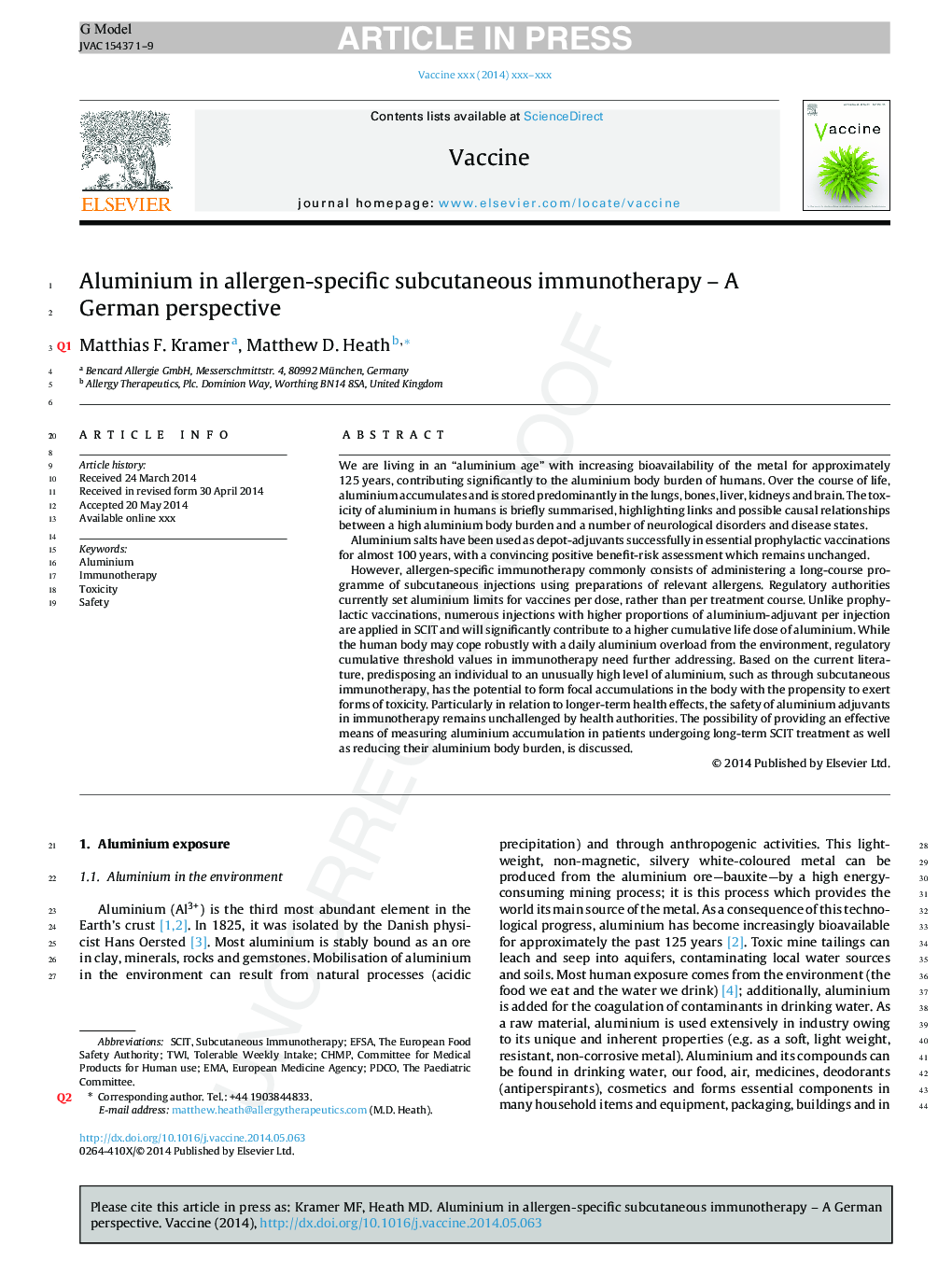| Article ID | Journal | Published Year | Pages | File Type |
|---|---|---|---|---|
| 10964725 | Vaccine | 2014 | 9 Pages |
Abstract
However, allergen-specific immunotherapy commonly consists of administering a long-course programme of subcutaneous injections using preparations of relevant allergens. Regulatory authorities currently set aluminium limits for vaccines per dose, rather than per treatment course. Unlike prophylactic vaccinations, numerous injections with higher proportions of aluminium-adjuvant per injection are applied in subcutaneous immunotherapy (SCIT) and will significantly contribute to a higher cumulative life dose of aluminium. While the human body may cope robustly with a daily aluminium overload from the environment, regulatory cumulative threshold values in immunotherapy need further addressing. Based on the current literature, predisposing an individual to an unusually high level of aluminium, such as through subcutaneous immunotherapy, has the potential to form focal accumulations in the body with the propensity to exert forms of toxicity. Particularly in relation to longer-term health effects, the safety of aluminium adjuvants in immunotherapy remains unchallenged by health authorities - evoking the need for more consideration, guidance, and transparency on what is known and not known about its safety in long-course therapy and what measures can be taken to prevent or minimise its risks. The possibility of providing an effective means of measuring aluminium accumulation in patients undergoing long-term SCIT treatment as well as reducing their aluminium body burden is discussed.
Keywords
Related Topics
Life Sciences
Immunology and Microbiology
Immunology
Authors
Matthias F. Kramer, Matthew D. Heath,
